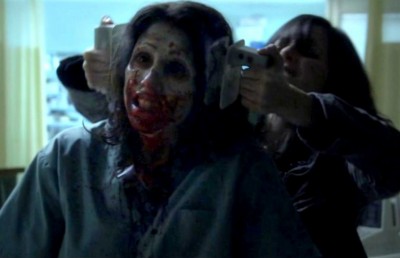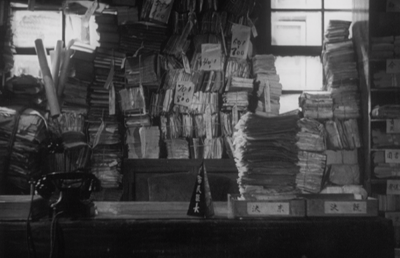Mother of Tears
Argento Concludes the Trilogy
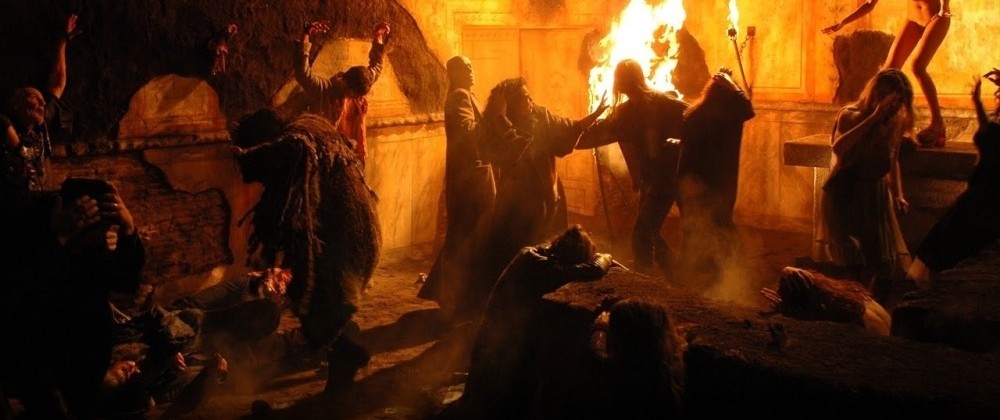
Mother of Tears is one of the most eagerly anticipated horror films in years, being the long-awaited final installment (after a 27 year interlude, 1980-2007) of one of the greatest horror film trilogies ever made, Dario Argento’s Three Mothers trilogy. The wait has been long for Argento fans, but, surprisingly, it does not constitute the longest interim in a trilogy. In a strange coincidence, 2008, one year after Mother of Tears, marked the long(er)-awaited completion of José Mojica Marins ‘Coffin Joe’ trilogy, Embodiment of Evil, 44 years after its inception film of 1964, At Midnight I’ll Take Your Soul. Mother of Tears is not the Argento film to unite Argento’s naysayers, who have been plentiful in recent years. It seems many of his loyal fans have turned against the once great maestro. I must admit that I have a weakness for his work and have tended to be kinder to his lesser works, though not with some which I think are beyond any kind of redemption (Phantom of the Opera, The Card Player, though the latter still has a great score by Simonetti and one impressive set piece). The problem with Mother of Tears is compounded with it being associated with his two most prized jewels, Suspiria (1977) and Inferno (1980), and hence is already up against it. No film can possibly near those masterworks (although, the mind boggles, because a Suspiria remake is in the works).
The film opens with an urn found outside a cemetery, which is taken to an archeological museum in Rome intended for English art historian Michael Pierce (Adam James). Instead, it is opened by two impatient workers, one being Michael’s girlfriend Sarah Mandy (Asia Argento). When one of the archeologists, Giselle Mares, played by Coralina Cataldi-Tassoni (who was present at the film’s screening when I first saw it at Montreal’s Fantasia International Film Festival in 2008) cuts herself and blood spills into the urn (homage to Mask of Satan), the blood acts as a life-force unleashing the dreaded wrath of the last of the three Mothers, Mater Lacrimarum, “the most beautiful and evil of the witches.” Three demons that are reanimations of the three statuettes entombed in the urn, accompanied by a wild baboon (shades of Phenomena and a sign of Argento’s love of animals), murder Giselle violently (a paring device splits open her mouth) and sets forth the evil wrath of the third remaining member of the three mothers, the mother of tears (Mater Lacrimarum, mother of tears, Rome), after Mater Suspiriorum (mother of sighs, in Freiberg, Suspiria) and Mater Tenebrarum (mother of shadows, in New York, Inferno). Sarah witnesses the brutal attack and runs away from the museum, then is taken to a police station for questioning (one of the film’s worse scenes), where all but one officer, Enzo Marchi (Cristian Solimeno), are stupefied by her crazy story. In a nice gesture to Argento’s past, Asia’s mother Daria Nicolodi, who co-authored Suspiria and is said to be a witch herself, and is on record as saying that her grandmother lived an experience close to the one lived by Jessica Harper in Suspiria, plays a powerful ‘white’ (good) witch who died trying to defeat the evil Mater Suspiriorum witch. Nicolodi appears to Asia as a translucent ghost, acting as her muse, protector, and guide, and instructing her of her own unknown powers. Sarah’s powers are revealed in one of the more groan-inducing scenes, where she makes herself invisible in a bookstore to avoid being found by police who are now searching her out following the increasing mayhem around the city. The main thrust of the plot, which thankfully keeps Asia Argento in almost every scene, is that Mater Lacrimarum is relentlessly pursuing Sarah as a form of revenge over her mother’s attempt to kill Mater Suspiriorum, and perhaps because Sarah has powers which may be stronger than even she knows. Witches from all over the world land upon Rome to help celebrate the rebirth of Mater Lacrimarum. This exposition includes perhaps the scene most reviled by Argento fans, an airport scene where a rambunctious group of 1980’s style Goth-dressed woman –witches or witch wannabes– arrive in Rome, hissing and cackling at passer byes, inducing laughter rather than menace. Perhaps a reason why this particular scene has been selected for derision is because the setting unconsciously reminds fans of the great opening airport scene in Suspiria.
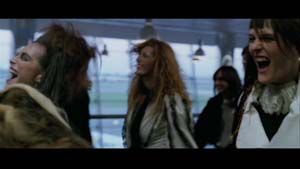
The modestly budgeted film manages to nicely capture the sense of a city (Rome) slowly going mad, with incidental attacks in the background of shots, car crashes, broken storefronts, and scattered urban chaos. As part of the mayhem we have the plot point that was once original but now seems to be common in contemporary horror (The Happening, From Within, some of the Masters of Horror films) of people being controlled by a powerful force to commit violent suicide and/or death. The first of such events occurs in broad daylight when a woman throws her baby off a bridge (the scene is marred by the bad prosthetic baby dummy). As the mayhem closes in around Sarah, and she learns more about her own personal history from the ‘experts,’ she begins to accept her role as heroine. The film ends like the previous two films in the trilogy, with Sarah bringing an end to the witch’s reign by killing the witch and causing the abandoned architecture to collapse. Like Suzy Bannion in Suspiria, Sarah deduces the clues that open a secret door to the Gothic labyrinth passageways leading to the catacombs (real I believe) and the lair where Mater Lacrimarum and her hellish minions live. Recalling Jose Mojica Marin’s own depiction of hell in This Night I’ll Possess Your Corpse, 1966 (though not as extensive or Boschian), the witch’s hellish lair is depicted in dark brownish/reddish lighting hues, with its denizens performing all sorts of creative sexualized torture.
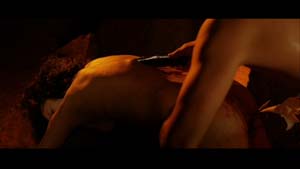
Sarah makes her way through the catacombs and arrives at the lair, where we get our first fully exposed view of the witch, who is not the traditional old hag but a young, gorgeous, silky skinned Lilith (Moran Atias). Sarah manages to outwit the witch by stripping her of her power-giving golden pagan garment (which was in the urn) and setting it on fire. The witch dies a grand death, impaled by a huge, pointed rooftop pillar that comes crashing through to the catacombs (an ultimate gesture of phallic revenge). Argento ends the film on a bizarre note (reminiscent of The Beyond in its incongruity). Sarah and the remaining male hero, detective Enzo, escape from the crumbling ruin up through a crack in the cement floor to a surreal, desolate, post-apocalyptic cityscape. In a mix of relief and acknowledgement of the alien location they are in, the two characters begin to laugh maniacally, leaving everything unresolved (is the world destroyed? are they in fact dead and in their own hell or heaven? or are they, as Brad Stevens argues in a Video Watchdog round table discussion discussed below, waking up from an unending dream?). As an interesting side note, as Jessica Harper (Suzy Bannion) walks away from the crumbling building at the end of Suspiria she has a similar smile emerging on her face.
The main knock against Mother of Tears is its inconsistency, and the fact that it foregoes the sophistication and formal subtlety of Argento’s earlier works for a more visceral, straight for the jugular approach, which may be a result of Argento’s misguided decision to pander to today’s increased level of screen violence. There are as many bad things about it as good. For starters, it is far too plot dependent for an Argento film (especially one that signals the end of a trilogy that was famous for thumbing its nose at narrative protocol), which means that there are none of the glorious set-pieces of the first two films because the plot moves quickly; the dialogue is often poor or clumsily spoken (here Asia Argento should be applauded for managing to come out relatively unscathed with some bad dialogue), and the English version audience must bear with a range of strong accents –German, British, Italian– which makes bad dialogue worse (it is an often overlooked truism that bad dialogue always sounds worse spoken than read in subtitle).
In most films dealing with ancient rites and rituals you can expect one scene where an expert gives out back-story narrative exposition. There are three such scenes here, evidence to the misguided slavishness to plot. The first exposition scene takes place at Catholic hospital where the Monsignor who had found the medieval urn recovers from a stroke. A priest gives out back-story information dating from 1814 to one of the male leads, English art historian Michael Pierce (Adam James), who has come to visit the Monsignor. The exposition does lead to a nice charcoal comic book-styled montage of the account; in the second exposition scene another priest, Father Johannes, played by Udo Keir, gives out information to Sarah Mandy and a German medium assisting Sarah, Marta (Valeria Cavalli), about her mother and the back-story of the three witches; and the third ‘exposition’ scene comes when a wheelchair-bound alchemist (Philippe Leroy) shares information with Sarah about the architectural history of the three mothers (Friedburg, New York, and Rome). This scene includes a wonderful ‘magic’ moment where the alchemist induces a state of paralysis in Sarah and then uses an emerald lens to look into Sarah’s eyes to verify her identify before he divulges information to her. Here perhaps we feel the pressure on Argento to explain the trilogy and give it a sense of closure. We can feel the necessity of such scenes rather than their effectiveness.
But there are also strong points to the film, namely the fast pace (at the expense of set-pieces), the relentless gore, the driving (at times Middle Eastern tinged) score by Claudio Simonetti, the almost constantly moving camera style (cranes, dollies, hand-held, steadicam), and Asia Argento’s presence in almost every scene. There is also the pleasure for Argentophiles of spotting the references to earlier works (namely his own), which may not make a film objectively better but potentially more entertaining for ‘auteurists’. What’s lacking from the all-out sensorial attack of the previous two films is the visual style –marked by the surreal color palettes and art deco designs– which was an aesthetic match to the non-rational narrative.
More than any other Argento film, Mother of Tears is filled with intertextual moments that allude to his earlier works. For example, the famous slime pool in Phenomena is recalled when Sarah escapes the crumbling building through a sewer drain filled with excrement and corpses. One character makes a reference to a “dancer named Suzy Bannion,” which of course is the name of the character played by Jessica Harper in Suspiria. A singular shot of Sarah at the mansion’s gate is lit in a bluish tint which recalls the glorious saturated color schemes of Suspiria and Inferno. A taxi ride with Sarah in the back seat is framed like the opening taxi ride from the airport in Suspiria.
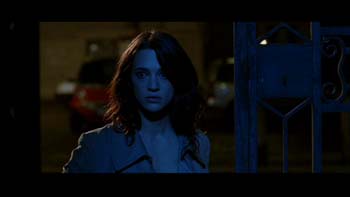
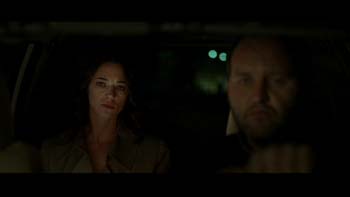
Tenebre is cited in the scene where Asia’s German medium friend, Marta (Valeria Cavalli), is revealed as a lesbian living with another woman. Unfortunately, for gender politics, one can argue that the lesbians pay for their sexual ‘transgression’ with brutal deaths: the witch’s minion first kills Sarah’s young lover by thrusting a medieval tong into her eyes, and then kills Sarah by impaling a sword into her vagina and out through her mouth (a nod to Cannibal Holocaust perhaps?). However, men also die ugly deaths. Udo Kier (Padre Johannes), in his only scene (echoing his one scene appearance in Suspiria), gets a gruesome death at the hands of his faithful servant, who becomes unglued by the witch’s power and bludgeons him with an axe to the face before turning it on her own throat (a nod to Anthony Franciosa’s feigned suicide throat slash in Tenebre ?).
There seems to be a push amongst a critical faction to read this film as a parody or comedy, an attempt to couch a positive spin on what they see as its weaknesses; and putting a positive spin on some of the incongruous or camp moments (like the cackling goth witch’s that arrive at the airport; the theatrical ending, Udo Keir’s over the top performance, the shrieking baboon, etc.). I’ve even heard Argento himself –perhaps as a response to this reaction– refer to it as a ‘comedy.’ I find this reading hard to accept, largely because there is nothing in the film’s pre-production history that would suggest or hint at that; and indeed there is nothing to suggest in Argento’s previous works a predilection for comedy. Yes, the film has an air of mania that runs from the sets, to the acting, to the violence, but a mania that is perhaps a result of the pent up energy of twenty seven years of anticipation rather than comic design.
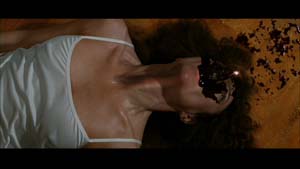
However, while not a return to form, the film is nowhere near as bad as many fans are saying, including a recent Video Watchdog (#147) round table discussion on the film, in which all but one of the participants (Brad Stevens) voiced dissenting views (the dissenters being Tim Lucas, Maitland McDonagh, Kim Newman and Richard Harland Smith). Although the film does not replicate the surreal color styling of the first two films, I disagree with the consistent claims made by all the dissenters in the round table that Mother of Tears is visually “ugly” (they refer to it as being “flat,” “graceless,” or “bland” on many occasions). I would challenge anyone to define some of the stills I’ve selected from the film as being “flat,” “graceless,” or “bland”.
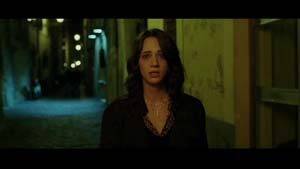
I would argue that Argento made a concerted decision to NOT repeat the previous visual look, based on the fact that the dominant colors of the previous two films, blue, red, green, are rarely seen in Mother of Tears, and replaced by a visual palette of somber, earthy brown and dark orange colors. Given the medieval theme represented in the torture tools and costumes (as Mater Lacrimarium, Mother of Tears, says, they have waited 1000 years to return) one could argue the same with the brown/orange visual look. As a point of comparison, the cinematographer Frederic Fasano also lensed Asia Argento’s Scarlet Diva (2000), a film with a far more flamboyant color style than Mother of Tears; Fasano also worked with Dario Argento on Do You Like Hitchcock (2005) and his soon to be released (2009) Giallo.
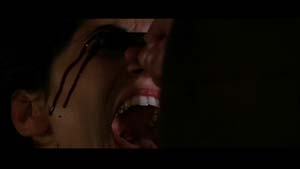
The round table also describes the killings as being ‘ugly’ compared to the highly stylized murders of the first two films. Lucas refers to the murders as “so ugly and disgustingly misogynistic that they are difficult to watch, and impossible to enjoy from any standpoint of aesthetic pleasure, which is the very hallmark of the first two films in the trilogy” (p. 27). Of all the murders (and there are more men murdered than women) two of them are what can best be described as ‘excessively’ violent and graphic, the first murder by the three demons of Giselle (Carolina Cataldi-Tassoni) and the murder (at the hands of his possessed maid) of Father Johannes (Udo Kier). The most reprehensible murder, and the only one with obvious sexual overtones is the vaginal impalement of the German lesbian medium, Marta. I agree that this murder is misogynist (although that is not the same as saying Argento is misogynist, which the round table participants come close to saying). I myself have used this argument of a highly stylized representation of violence acting as an aesthetic buffer against (ideological) claims of misogyny. However, I think there is also a narrative rationalisation to the nature of Marta’s murder. Of all the characters murdered Marta is the only one who had a personal connection to the three mothers. As Marta tells Sarah Mandy (Asia Argento), she knew her mother Elisa Mandy well, and was her student. Elisa Mandy was a ‘white witch’ with strong powers who challenged and nearly killed Mater Suspiriorum, but was eventually murdered by Mater Suspiriorum. Marta’s personal relationship to Elisa Mandy, a powerful white witch, can explain why they treated her death with an extra bit of cruelty and sadistic irony (being a lesbian and being murdered by a large phallus shaped weapon). Since we clearly see witches engaged in lesbian sex in the final lair scene leading to Mater Lacrimarum’s death, one would question that Marta’s excessively sexualized death was a result of her being a lesbian. In no way am I condoning the act, which I too found difficult to watch, but only trying to understand it within the narrational context of the film.
Does the film honor its illustrious history? If using Suspiria and Inferno as an aesthetic template, then the obvious answer would be no, because it never matches the passionate, manic, sensorial wizardry of the first two films. But how many films would? The one positive critical voice from the roundtable discussion cited earlier, Brad Stevens, argues his point on the basis of the film being a ‘dream text’ (the film being “infused” with a “dream-like illogicality”). Interestingly, online critic Fernando F. Croce also rates the film highly for similar reasons, referring to the film as “dense and oneiric,” and “palpably the work of a decadent poet.” [1] If seen on its own, Mother of Tears has enough quirky and original moments mixed in with its misguided touches, flaws, and moments of unintentional (absurdist? camp?) humour, to make it a thoroughly entertaining horror film. In the end, an Argento with warts is better than most.
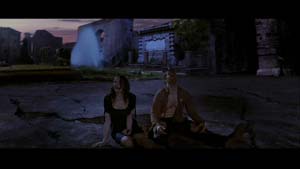
Endnotes
1 Fernando F. Croce, “Mother of Tears.” Slant. June 4, 2008.




